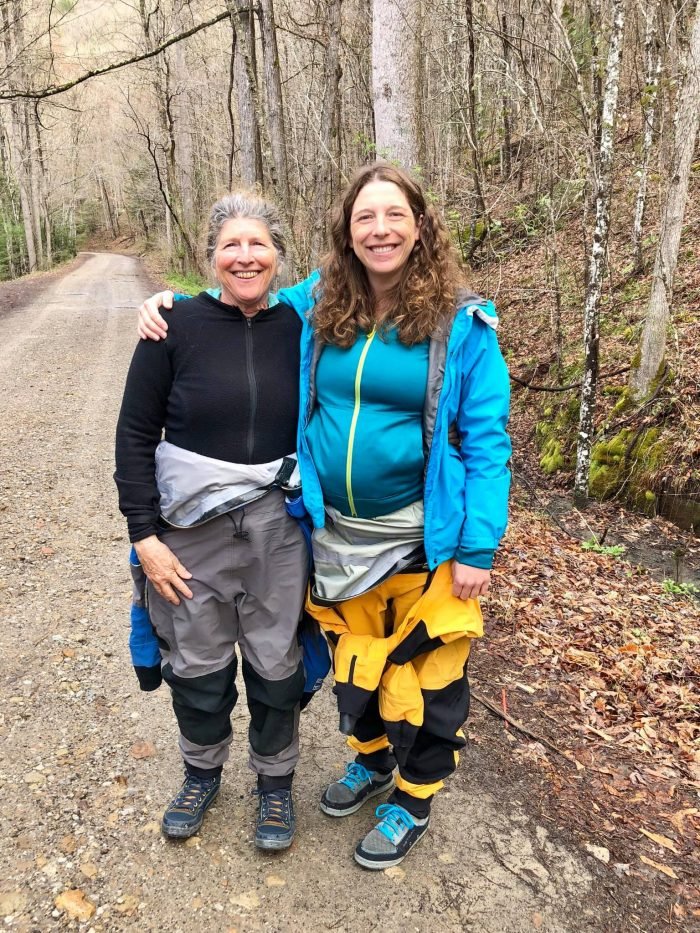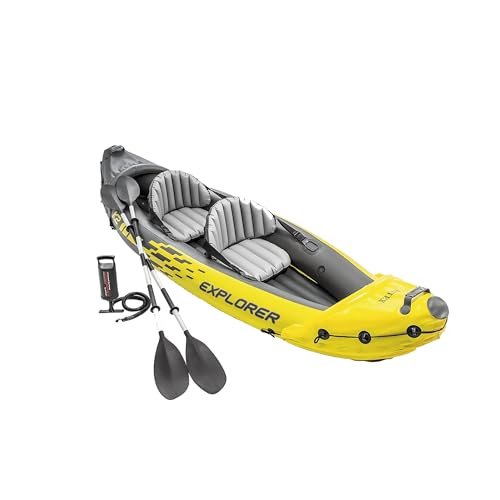Are you wondering if kayaking is safe while you’re pregnant? You’re not alone.
Many expectant moms want to stay active but worry about what’s best for their baby and themselves. Kayaking can feel like a fun way to enjoy nature and get some exercise, but is it really the right choice during pregnancy?
Keep reading to discover important tips and expert advice that will help you decide if you can keep paddling safely throughout your pregnancy. Your health and peace of mind matter most, and we’re here to guide you.
Pregnancy And Kayaking Basics
Kayaking can be a peaceful way to enjoy nature while pregnant. It offers gentle exercise and fresh air.
Before you start, it is important to know how pregnancy affects your body during kayaking. Safety comes first.
Physical Changes Affecting Kayaking
Your body changes a lot during pregnancy. These changes can affect your balance and strength in the kayak.
- Your center of gravity shifts, which may change your balance.
- Hormones make your joints looser, raising injury risk.
- Increased body weight can tire you faster.
- Breathing may become harder as your belly grows.
- Swelling in hands and feet can affect grip and comfort.
Benefits Of Kayaking During Pregnancy
Kayaking offers many good effects for pregnant women. It supports health without too much strain.
| Benefit | Description |
| Low Impact Exercise | Easy on joints and muscles |
| Improves Circulation | Helps reduce swelling and cramps |
| Strengthens Core | Supports back and posture |
| Reduces Stress | Calming effect on mind and body |
| Fresh Air | Boosts oxygen levels and mood |

Safety Precautions For Expecting Moms
Kayaking can be a fun way to enjoy nature during pregnancy. Still, it is important to take safety steps to protect both mother and baby.
Before going out on the water, knowing the right precautions helps keep the experience safe and comfortable.
Consulting Your Healthcare Provider
Talk with your doctor before kayaking. They can check if your pregnancy is healthy enough for this activity. Share details about your plan and listen to their advice.
Your provider may suggest avoiding kayaking if you have risks like high blood pressure or a history of early labor.
Choosing The Right Kayak And Gear
Select a kayak that offers good balance and space. This helps you sit comfortably and reduces the chance of tipping over.
- Use a wide, stable kayak designed for beginners.
- Wear a properly fitted life jacket made for pregnant women if available.
- Bring a paddle with a comfortable grip to avoid strain.
- Carry water and snacks to stay hydrated and energized.
- Wear sun protection like a hat and sunscreen.
Avoiding Risky Water Conditions
| Condition | Why to Avoid | Safer Option |
| Strong Currents | Hard to control kayak | Calm lakes or ponds |
| Cold Water | Risk of hypothermia | Warm, shallow water |
| High Winds | Unstable kayak movement | Wind-free days |
| Heavy Traffic | Collisions or distractions | Quiet, less crowded areas |
Best Practices On The Water
Kayaking during pregnancy can be a safe and enjoyable activity with the right care. It is important to follow some best practices to protect both mother and baby.
Understanding proper paddling, balance, and when to stop helps keep you safe on the water.
Proper Paddling Techniques
Use smooth and gentle strokes to avoid strain on your body. Keep your back straight and use your core muscles when paddling.
Hold the paddle with relaxed hands and avoid sudden, strong movements. Take breaks often to rest your arms and shoulders.
- Keep paddle strokes slow and steady
- Engage your core, not just your arms
- Hold paddle loosely to avoid tension
- Take regular rest breaks
Maintaining Balance And Stability
Choose a stable kayak with a wide base to reduce tipping risk. Sit upright with feet flat on footrests for better control.
Keep your movements slow and steady. Avoid leaning too far to one side or making sudden shifts in weight.
- Select a wide, stable kayak
- Sit upright with feet supported
- Move slowly to keep balance
- Avoid sudden body shifts
Recognizing Signs To Stop
Stop kayaking if you feel pain, dizziness, or shortness of breath. These signs may mean your body needs rest.
Also stop if you feel tired, nauseous, or notice swelling. Always listen to your body and avoid pushing yourself too hard.
- Pain in the abdomen or back
- Dizziness or lightheadedness
- Shortness of breath or chest pain
- Severe fatigue or nausea
- Swelling in hands or feet
Timing Kayaking Trips
Kayaking during pregnancy can be safe if planned well. Choosing the right time helps protect you and your baby. Understanding when and how long to kayak is important.
This guide covers the best pregnancy trimesters for kayaking. It also shares tips on trip length and how often you should paddle.
Ideal Pregnancy Trimesters For Kayaking
The second trimester is usually the safest time to kayak. You feel better than the first trimester and still have energy before the third trimester. Avoid kayaking in the first and third trimesters due to risks and discomfort.
- First trimester:Avoid kayaking because of morning sickness and risk of miscarriage.
- Second trimester:Best time to kayak with doctor approval.
- Third trimester:Stop kayaking to prevent injury and strain.
Duration And Frequency Recommendations
Keep kayaking trips short and easy. Overdoing it can cause fatigue or strain. Listen to your body and take breaks often.
| Trip Length | Frequency | Notes |
| 30 to 60 minutes | 1-2 times per week | Stay on calm water |
| Under 30 minutes | More frequent if feeling well | Rest when needed |
| Over 60 minutes | Not recommended | Increases risk of strain |
Alternatives To Kayaking
Kayaking is a fun activity, but it may not always be safe during pregnancy. Pregnant women need gentle ways to stay active. There are other water and indoor activities that are easier on the body.
These alternatives help keep you healthy without risking your or your baby’s safety. Choosing the right exercise is important for comfort and fitness.
Low-impact Water Activities
Water supports your body, making movement easier and safer. Low-impact water activities reduce strain on joints and muscles. They also help improve circulation and reduce swelling.
Swimming and water walking are good choices. These exercises keep you active without heavy effort or risk of falling.
- Swimming laps gently
- Walking in shallow water
- Water aerobics classes
- Floating and stretching in water
Indoor Exercises For Cardiovascular Health
Indoor exercises can keep your heart healthy during pregnancy. Choose low-impact workouts that avoid sudden moves or heavy lifting. These exercises raise your heart rate safely.
Using exercise bikes, walking on treadmills, or doing prenatal yoga helps improve endurance. These activities are easy to control and adjust based on how you feel.
- Stationary cycling at a slow pace
- Walking indoors on flat surfaces
- Light dancing or aerobic moves
- Prenatal yoga for flexibility and strength

Frequently Asked Questions
Can Pregnant Women Safely Kayak In Calm Waters?
Yes, pregnant women can kayak safely in calm waters with medical approval. It’s important to avoid rough conditions and use proper safety gear.
What Precautions Should Pregnant Kayakers Take?
Pregnant kayakers should wear a life jacket, avoid strenuous paddling, stay hydrated, and avoid extreme weather or rough waters for safety.
When Is Kayaking Unsafe During Pregnancy?
Kayaking is unsafe during pregnancy if you have complications, are in the third trimester, or face rough water conditions. Always consult your doctor first.
How Does Kayaking Benefit Pregnant Women?
Kayaking provides low-impact exercise, improves circulation, reduces stress, and supports mental well-being, making it a healthy activity during pregnancy with proper care.
Conclusion
Kayaking during pregnancy can be safe with proper care and doctor’s advice. Choose calm waters and avoid strong currents to stay safe. Wear a life jacket and keep your balance steady. Listen to your body and stop if you feel tired or uncomfortable.
Always tell someone your plan before you go out. Enjoying nature and fresh air helps your mind and body. Stay cautious but have fun—your health comes first. Kayaking can be a peaceful, gentle way to stay active while pregnant.



